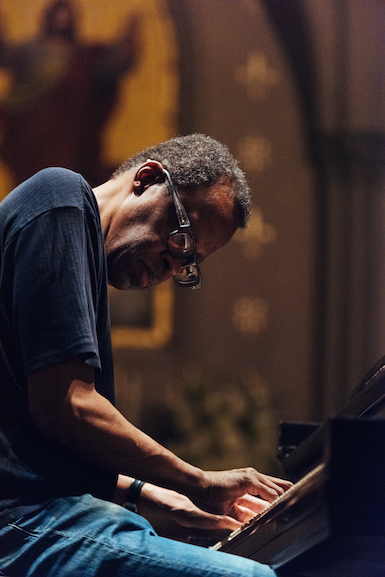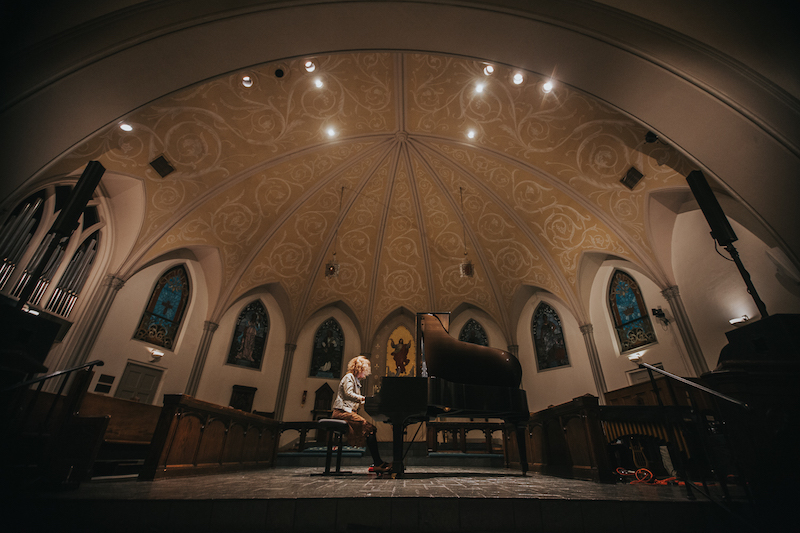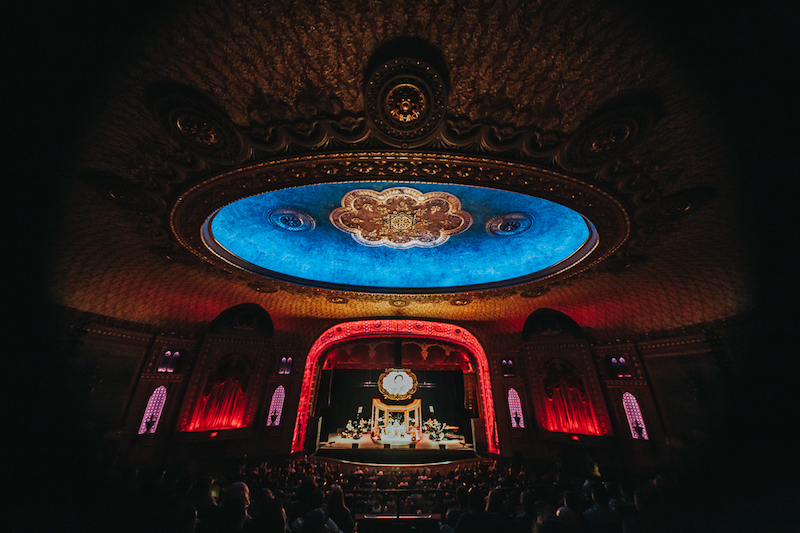Avant-Garde Tendencies in Tennessee
A Report from the Big Ears Music/Art FestivalAt once site-specific and sprawling across a city that might strike some as a surprising home for an occasion of the kind, the annual Big Ears festival in Knoxville, Tennessee, reconsiders the terms by which experimental music can be presented to an eager, sophisticated audience compelled by seemingly errant tangents of art- and music-making. This year’s edition, the seventh, once again invited fans to traverse the pleasant streets of downtown Knoxville to assemble in a variety of venues, among them the historic Tennessee Theatre, a Depression-era show palace of Spanish-Moorish design; two different churches; and repurposed industrial spaces that included an old belt supply warehouse whose airy expanse offered stunning acoustics. In settings of the kind, festival-goers could listen and consider things like a morning-hour recital of music by Philip Glass or a Nels Cline pop-up gig signaled by a cell-phone alert.
The festival’s playful amorphousness is a significant part of its charm, along with the walkability of Knoxville’s revitalized urban center and an absence of the corporate branding presence pervasive at forerunning music festivals like South by Southwest and the Red Bull Music Academy. In previous years, composers-in-residence have included Terry Riley, Steve Reich, and John Luther Adams, underscoring the festival’s importance as a summit for iconic figures of post-’60s classical music. This year’s special guest was British composer Gavin Bryars, who brought his ensemble and a hefty double-bass to the United States for the first time, for a trio of concerts that included his signature pieces Jesus’ Blood Never Failed Me Yet and The Sinking of the Titanic. But you could just as easily have ceded the guest-of-honor laurels to the Chicago band Wilco, whose members (including frontman Jeff Tweedy, drummer Glenn Kotche, and guitarist Cline) splintered off into what Big Ears billed as a festival-wide “diaspora” for an array of individual performances in ad-hoc or sidebar groupings.
Living legends abounded, from a rare appearance by Musica Elettronica Viva, an electro-acoustic group formed in the 1960s, to jazz composer Carla Bley. By another measure, the festival was a salute to the adventurous sounds of Norway, with an array of artists led by avant-folk accordionist Frode Haltli and the formidable electronics-abetted improv group Supersilent.
“There’s no preconception,” said Ashley Capps, the longtime music promoter and Knoxville native best-known for producing the more jam-band-oriented Bonnaroo Music + Arts Festival. “It’s an organic impulse of trying to bring together some of the interesting strands of music that borrow ideas from avant-garde traditions and see those influences resonate across the decades. It’s an interesting map to explore.”
After launching Big Ears in 2009 and, after a hiatus, restoring it in 2014, Capps has hit on a distinctive formula/non-formula to create a music festival as art statement. He’s lucky to have malleable and convenient infrastructure in a city resurgent after long neglect, as well as a community prideful of its place as a cultural beacon to Appalachia. Although the snobbish tendency is to brand every red state as one vast Trumplandia of big-box nothingness, Big Ears defies all that—and argues ringingly for the South as a fertile nurturer of American culture.
“If you start with the history of what’s considered traditional American music, you start in the northeastern corner of Tennessee or Virginia,” Capps said, noting the significance of Bristol, Tennessee, as a birthplace of country and the origins of the seminal Carter Family in Maces Spring, Virginia. “You follow this road down through Knoxville, through Nashville, through Memphis, through the Mississippi Delta to New Orleans, and you have an extraordinary cultural catalyst there that’s really changed the world. It’s the perfect setting for an edgier music festival. Southern culture has always had a punk, do-it- yourself, I-don’t-care-what-you-think kind of vibe about it that I like to think informs the festival.”
Although there are edgier festivals set in unique civic environments—the Unsound Festival in Krakow, Poland rises to mind—Big Ears boasts a distinct user-friendliness for those who like to be stacked with options (or occasions for Solomonic quandaries). Should one abandon a rapturously cooking duo set with jazz pianist Matthew Shipp and loft-era drummer Bobby Kapp (resplendent in a glittery blue shirt suitable for Sun Ra) to catch a late-night show by DakhaBrakha, a Ukrainian quartet devoted to making “ethno chaos” in fuzzy conical headgear? Hit up the precision-minded art-rock band Horse Lords in an old warehouse at one end of town, or get in line early for the American debut of the Gavin Bryars Ensemble? I chose the latter and found myself sharing a front pew with Janie Geiser, the artist and experimental filmmaker, giggling at the composer’s dry anecdotal wit and floating back nearly a thousand years as the ensemble performed adaptations of 12th-century sacred music.
“It’s that flux of things co-existing in parallel that’s essential,” Capps said of the festival’s discerning mix, which capitalizes on multiple generations of musicians who are apt to perform in a rock dive or a concert hall. “It creates a dynamic tension.”
The feelings evoked during an enriching weekend approached the realm of the spiritual, a word that Capps said he hears used often to describe Big Ears. The ideal state of mind for the festival, he explained, is both elemental and counter-cultural in the present tense: be here now.
Copyright 2017, Art Media ARTNEWS, llc. 110 Greene Street, 2nd Fl., New York, N.Y. 10012. All rights reserved.
 The international Art Magazine
The international Art Magazine

